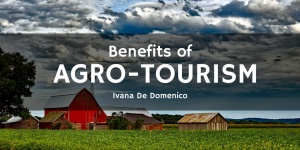Agro-tourism is a type of vacation where travelers become a part of the daily operations of a working farm or ranch and take part in various fun and educational activities. It is a memorable and valuable experience and a unique way to stay at an unusual type of bed and breakfast.
Travel is about selling an experience as much as a destination, and agro-tourism is certainly a unique experience. A visitor might feed the animals, pick vegetables and fruits, gather eggs, taste honey or other products, learn wine and cheese making, navigate a corn maze, take a hayride, ride horses, and perhaps buy local produce or gifts that are hand-crafted.
Agro-tourism gives visitors the chance to see how their food is produced. While many take their food for granted, there is a lot involved in the logistics behind farming and the role it plays in getting food on a table. Tourists can witness all the steps that are necessary to result in the finished products seen in stores and markets.
This practice has the added benefit of raising awareness of the changing face of agriculture. Not enough thought is given to all that is necessary to cultivate the land in a sustainable way for the future needs of the populations that inhabit this earth. Agro-tourism can help exchange knowledge regarding eco-friendly agriculture and farming and how to reduce the climatic impact on land, forests, water, fish resources, and health in general. This can be accomplished in part by coordinating with government agencies to deliver productive and sustainable experiences.
You can also find out for yourself how such a venture is different in other parts of the world. Agro-tourism has become a growth industry in many countries in addition to the United States, including Canada, Australia, and the Philippines. Additionally, while you are in a specific area, you can add to your adventure by checking out the attractions, history, and culture of those surroundings.
Other technologies are being used to improve the agro-tourism experience. The use of geographical information systems (GIS) can give potential tourists a preview of their potential trip by displaying a realistic glimpse of the local characteristics and offerings, landmarks, recreational activities, and so much more.
It’s important that the agriculture industry develops better methods for generating interest in agro-tourism and an awareness of the benefits of time spent on a farm or ranch. Creative and attractive promotion of these trips, though unconventional, can still be done. Travel magazines, travel guides, and spread of the information by word of mouth are all potential methods of getting the word out. Those who have sampled that pleasure for themselves and their children can attest to the positive effects of some time spent on the farm.

